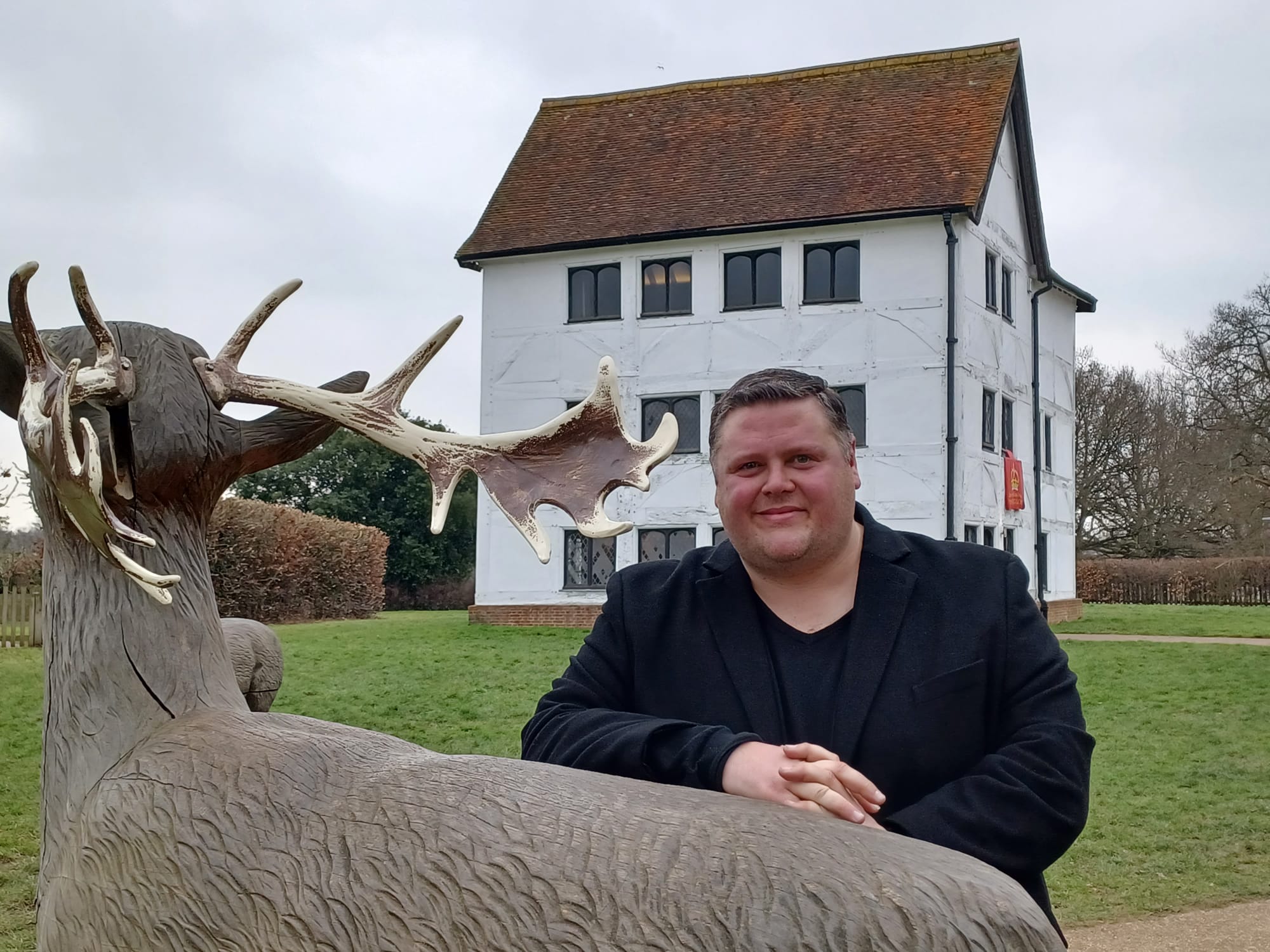As many readers will be aware, a Target Operating Model (TOM) review was commissioned by the City of London Corporation in 2020 to look at the composition of human resources and consider whether they were appropriately aligned to deliver the commitments outlined in the corporate strategy. Given the funding gaps in the Corporation’s short and medium financial plans, a cost reduction of 12.5% was set for every department to deliver through the TOM.
The review process has been extraordinarily complicated, consulting with stakeholders within the corporation, staff within the Epping Forest charity, elected Member and Verderers and trade unions. We did not not see this as a simple cost cutting exercise, but rather an opportunity to really think about who we are, what we do and the how we fill gaps in skillsets through training and development, or by engaging internal or external support.
Some of the key issues which emerged were a lack of collaboration across the Corporation, job specifications which were significantly out of date, staff not really understanding how their daily efforts connected to the corporate strategy, lack of mobility and career progression progression, lack of diversity and inclusion and an ageing workforce with a significant majority due to retire within 10 years. What was also overwhelming for me was the desire for change, from our hard-working staff.
Therefore, we approached the modelling in layers. A new Environment department within the City of London Corporation was established, headed by an Executive Director reporting to the Town Clerk / Chief Executive Officer. The Executive Director is supported by a Chief of Staff, to whom all business admin staff will report under a central utility.
Within the Environment Department is the Natural Environment Division, headed by a Director. As you will see from the chart below, The Director is supported by 5 Assistant Directors. 3 covering specific groups of Open Spaces: North London Open Spaces (Hampstead Health, Highgate Wood, Queen’s Park and West Ham Park), Epping Forest and The Commons (Coulsdon Common, Kenley Common, Farthing Downs, Riddlesdown, Burnham Beeches, Stoke Common and Ashtead Common).

In addition, 2 Assistant Directors have been introduced within the Director’s central utility. The first will focus on charity governance and commercial matters across the open spaces. The second will focus on Culture/Heritage, Education and Learning and Major Projects (detail outlined in the chart below). The Covid-19 pandemic has really emphasised the demand for outdoor education, particularly amongst disadvantaged students and those with complex needs, therefore, a decision has been taken to expand this team.
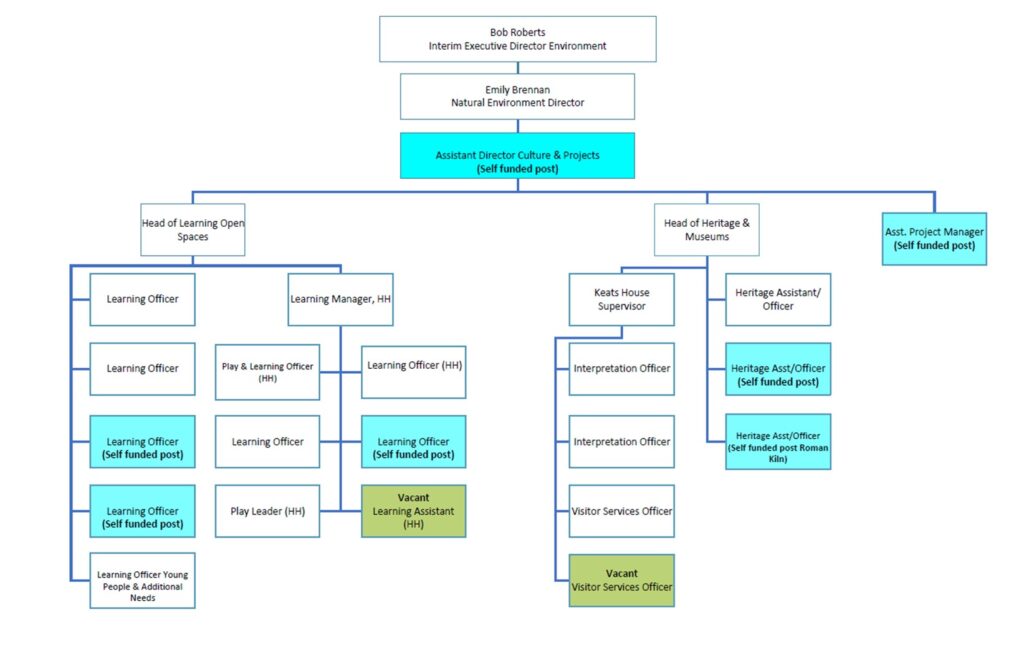
Moving to the layer below, the Epping Forest charity will continue to be managed by the Superintendent (with a corporate title of Assistant Director). The Superintendent will have 3 teams under their management: Business Development, Conservation & Recreation and Operations. There will continue to be a administrative team based in Epping Forest supervised by the Superintendent, but they will be managed by the Departmental Chief of Staff.
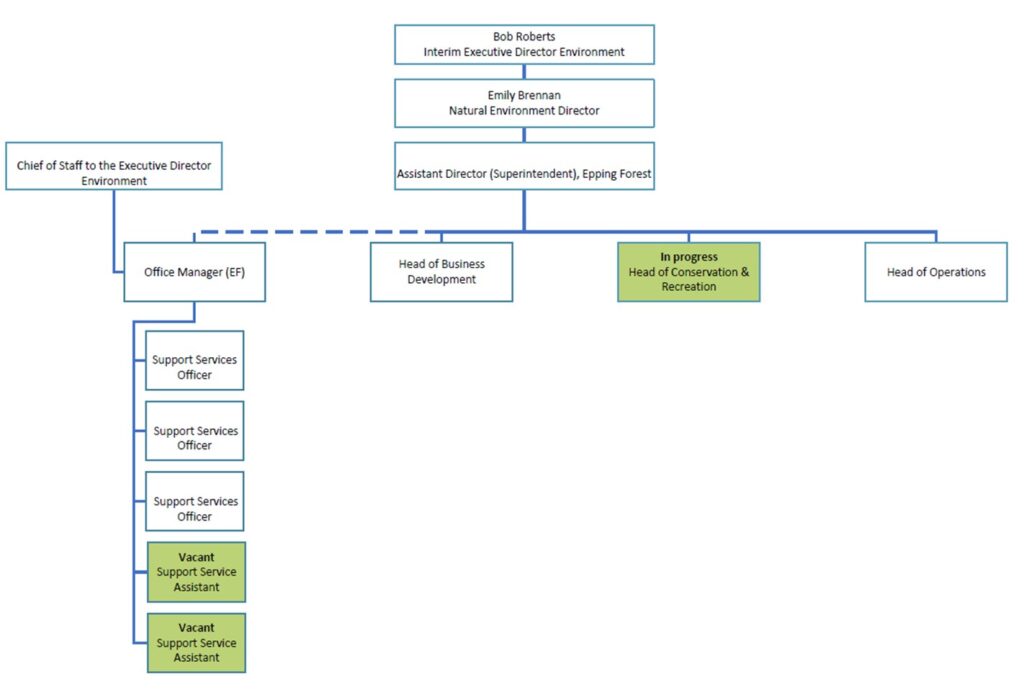
Within the Business Development team sits the visitor experience leads, the land agents and geographical information system teams, financial compliance and then some new teams around fundraising, engagement and communications and an additional team leading projects to drive risk mitigation.
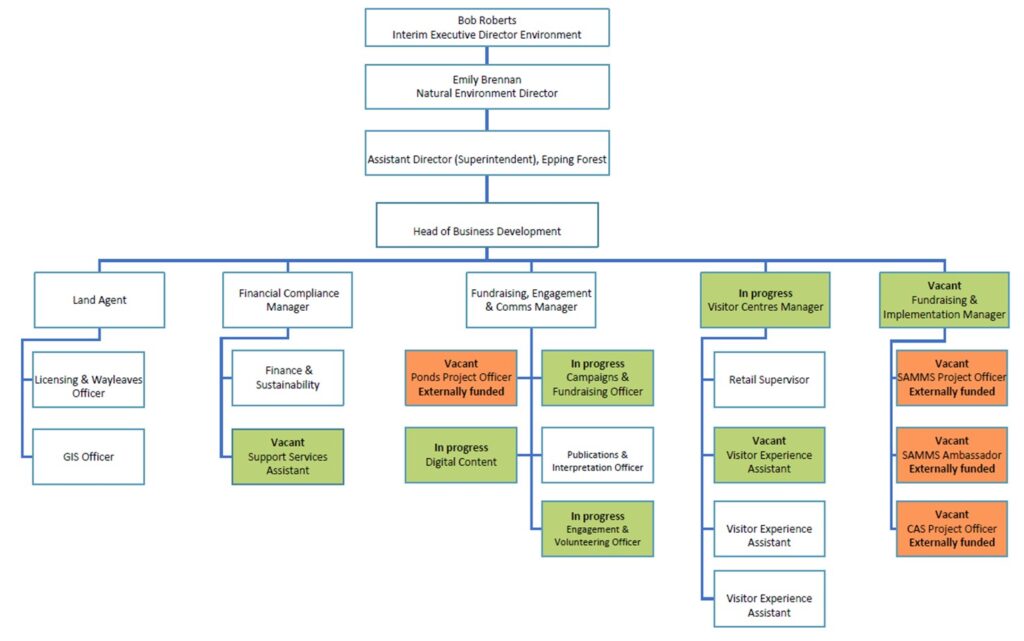
Next is the Conservation and Recreation team. We have grown the internal arborist teams to help manage our more than 1 million trees. We have also strengthened our focus on conservation, including a biodiversity officer to help build a new strategy around this important theme.
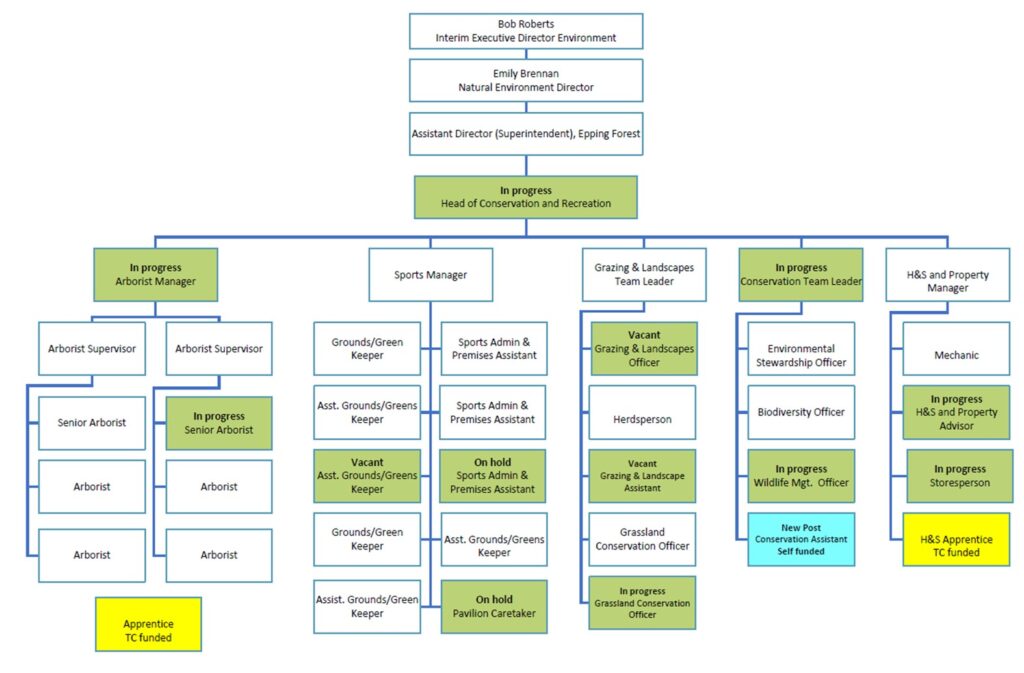
Finally, we have the Operations team. Having listened carefully to stakeholders, we recognised early that our Operations team in Epping Forest was under resourced. Given the 7 day coverage model across 2 shift patterns, it was not right that at some stages we had just 2 Forest Keepers on duty across the entire estate. The agreed structure below has seen a significant increase in those front-line service providers – from Forest Keepers to the Wardens and Enforcement Officers. This team is also widely supported by an army of volunteers.
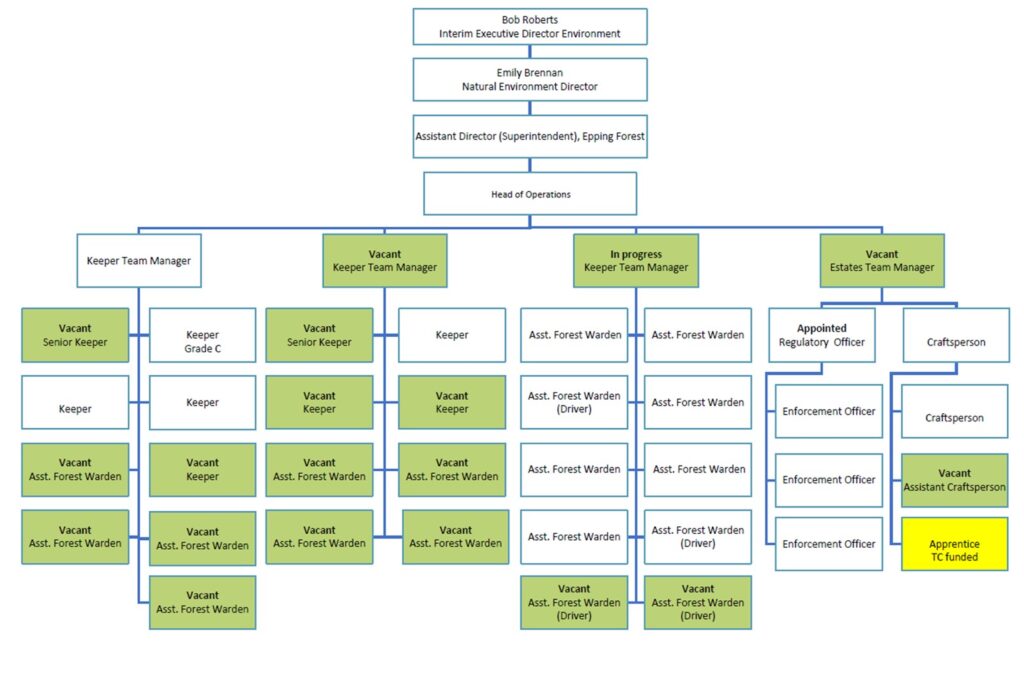
Whilst it has taken us some time to get to this stage, I think the output leaves us in a far stronger position. Every service that was previously provided will still be provided. The 12.5% savings we had to deliver through this restructure were achieved through the introduction of parking charges. We also made a strong business case for investment in staffing from the City of London Corporation and I am pleased to report that the Epping Forest staff budget has increased by £793,000 annually to fund this new structure.
You may have noticed the colour shading on some of the boxes above. Those which are white are roles which have been recruited to and successfully appointed. Those in Green are posts currently being recruited to. Those in Orange are externally funded posts. Those in Yellow are being funded through the UK Apprentice Levy and those in Blue are self-funded.
I hope that provides a transparent overview of what has been consuming so much of our time, but it is important to ensure our foundations are solid as we build for the future. Recruitment will likely continue to through the remainder of 2023, but we hope to go into 2024 fully staffed. Finally, I would note that this structure is obviously subject to change. We will review progress periodically, through the usual course of business.
If you are interested in joining our team, all of our vacancies will be published at City of London Corporation Jobs
